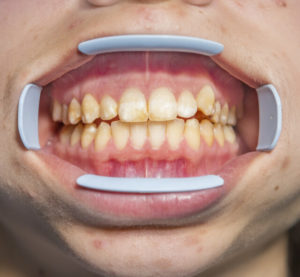Table of Contents
Did you know that excessive fluoride exposure during tooth development can cause stains on teeth to develop? More than that, in severe cases, it can also give rise to contorted enamel and pitted teeth. For more information, visit this dental clinic at Available Dental Care, Campbelltown.
Technically, these unsightly symptoms are, in fact, brought about by a process called hypomineralization, which has the effect of increasing the porosity of tooth enamel. When hypomineralization is triggered by fluoride consumption the resultant condition is known as fluorosis.
Not a Disease
It’s worth highlighting that fluorosis, far from being a disease, is, in reality, a cosmetic condition. Happily, this fact means that fluorosis will not lead to cavities or any other dental problems. Neither, interestingly, can the condition deteriorate once the teeth have erupted through the gums.
How Common is Fluorosis?
 Fluorosis is an increasingly common condition. Indeed, nowadays, it affects nearly 1 in 4 Americans aged 6-44. However, of that number, the vast majority of cases are classified as mild and may, in fact, only be detected following a professional dental inspection.
Fluorosis is an increasingly common condition. Indeed, nowadays, it affects nearly 1 in 4 Americans aged 6-44. However, of that number, the vast majority of cases are classified as mild and may, in fact, only be detected following a professional dental inspection.
Only about 2% of cases are considered moderate. Moderate fluorosis is characterized by the fact that more than 50% of the tooth enamel is affected. While severe fluorosis, in which all the enamel is affected, is exceptionally rare and accounts for less than 1% of cases.
Treatment
Regrettably, the enamel damage caused by fluorosis is permanent. However, that said, in many cases, the condition’s cosmetic effects may be practically imperceptible and, as such, not require any treatment.
In more severe cases, a range of cosmetic techniques can significantly improve the appearance of affected teeth. In terms of choice, on the one hand, patients can opt for straightforward tooth whitening or have a coating of MI paste applied to their teeth. On the other hand, meanwhile, patients can also choose to have veneers or crowns fitted.
Prevention
For infants under the age of 2, the use of toothpaste is unnecessary. Indeed, brushing can be satisfactorily conducted using no more than plain everyday water. Moreover, breastfeeding is recommended ahead of using formula.
When it comes to slightly older children, it makes a good deal of sense to store fluoride-containing products, such as toothpaste and mouthwash, out of their reach.
In a similar vein, young children should be supervised while brushing their teeth. Since toothpaste contains very concentrated levels of fluoride, children should use no more than a pea-sized amount to brush their teeth. Moreover, using unflavored toothpaste can help encourage children to spit out while brushing.
On top of that, fluoride supplements should only be consumed if the drinking water has not been fluoridated.
